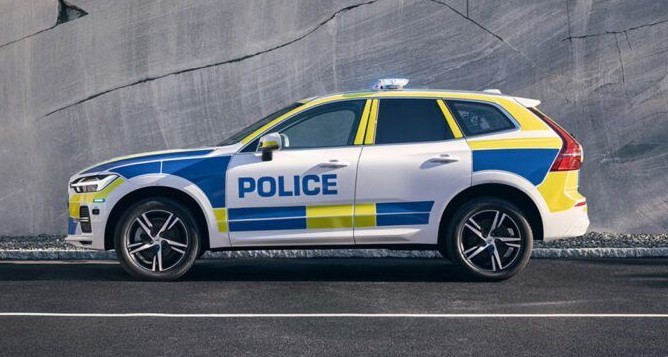There’s something undeniably fascinating about police cars. Perhaps it’s the blue lights and sirens, the specialised equipment they carry or simply the fact that most people rarely get to see them up close – unless they’re in trouble. So if you’ve ever wanted to get to know a police car a bit better (while staying on the right side of the law), let us guide you through how we make them here at Volvo Cars.
Already in 1929, the police in Sweden’s capital Stockholm fought crime from behind the wheel of a Volvo. The PV651 was the first Volvo car to be used by the police, and in the decades that followed, classic Volvo models such as the Amazon and the 144 have also served in police uniform.
Today, the Volvo XC60 SUV is our best-selling police car and it’s not hard to see why. It’s versatile, it has a high seating position for better overview and easier entry and exit, ergonomic seating and ample space.
Qualities like these, combined with our ability to custom-tailor cars to meet specific needs and our cars’ performance in critical areas such as braking and handling, are why law enforcement agencies worldwide choose Volvo cars to help keep the streets safe.
And let’s not forget that a police car is a workplace where law enforcement officers spend many hours each day. We know that a comfortable driver is a more alert driver, and our seats are designed to provide exceptional support and comfort for all body types. For optimal comfort and control in our driver seats, we offer extensive adjustability, helping to keep fatigue at bay while driving.
A workplace also needs safety. Should a collision occur, world-leading safety technologies work together to reduce impact and help protect everyone inside Volvo police cars.
“At Volvo Cars, safety and quality are our top priorities – and that’s why police forces across the world have trusted and continue to trust our cars,” says Ulf Rydne, Head of Police Cars at Volvo Cars. “This trust is also built on our ability to handle confidential information and provide cars that meet the rigorous demands of police work.”
From family rides to high-speed pursuits
So, how do we turn regular Volvo cars into police cars? While the police might use the same model you drive to pick up the kids from football practice or strap a canoe onto for a weekend at the lake, it’s not quite the same kind of car.
And we’re not just talking about adding blue lights and sirens; these are specially designed cars with a unique reinforced chassis that provides neutral and predictable handling in most situations, even when heavily loaded.
What’s more, Volvo police cars are engineered to perform, with all-wheel drive and efficient mild-hybrid engines. While the top speed of all new Volvo cars for regular customers is limited to 180 kilometres per hour, our police cars are exceptions. Depending on the engine, they can reach speeds of up to 250 kilometres per hour.
Tailored for duty: custom-made police cars
Of course, different police forces have different needs. So apart from the standard chassis and engines used in all Volvo police cars, we perform modifications and upgrades. For some, we deliver turn-key police cars built in our own factory. For others, we deliver cars to be re-built locally.
At our plant in Torslanda, Sweden, the conversion process takes up to 50 hours per car and is carried out by our dedicated team, who have special security clearance. Since the police also use unmarked cars, it’s during this process that the high-visibility police striping and blue lights are added.
Some other examples of the modifications we make include installing splinter protection on all windows and internal and external surveillance cameras. We can integrate the software needed to control the lights and sirens through the centre display, and equip the car with police radio, radar and antennas. We can also install burglar-proof weapon storage boxes as well as storage for other specialised equipment that officers might need while carrying out their duties.

